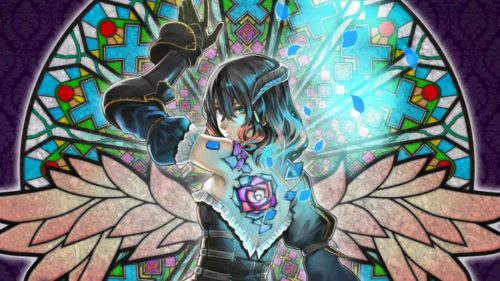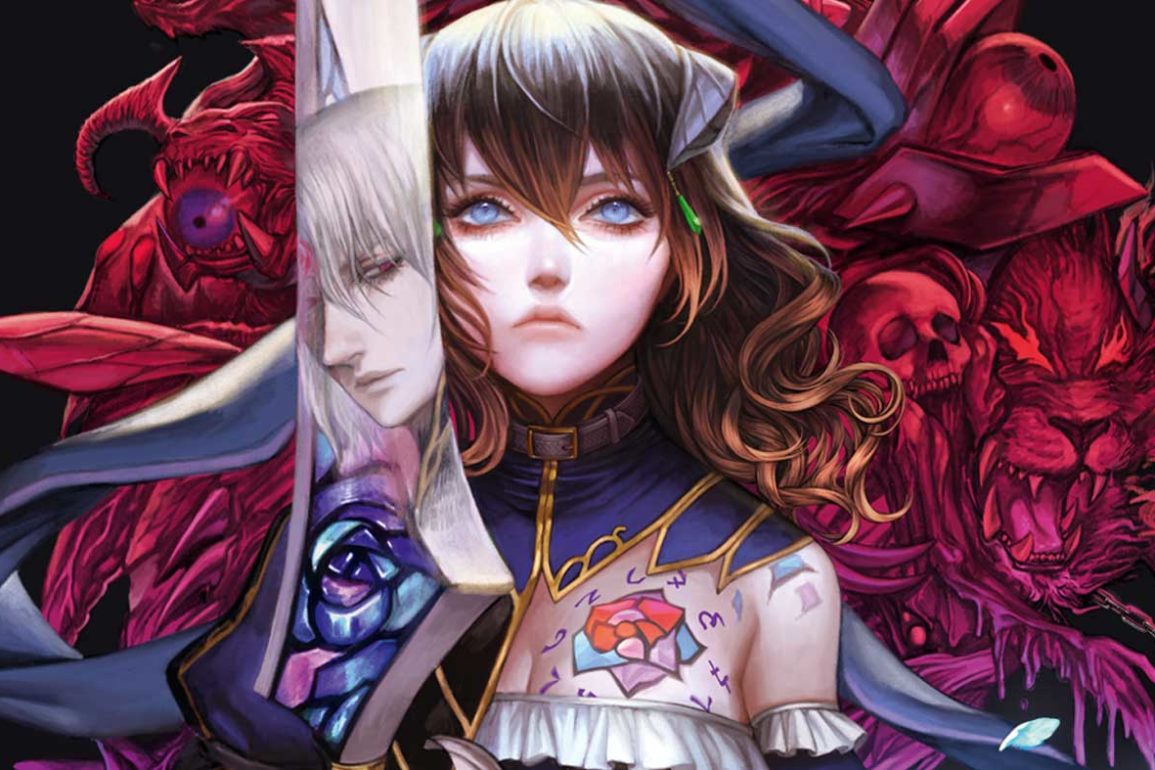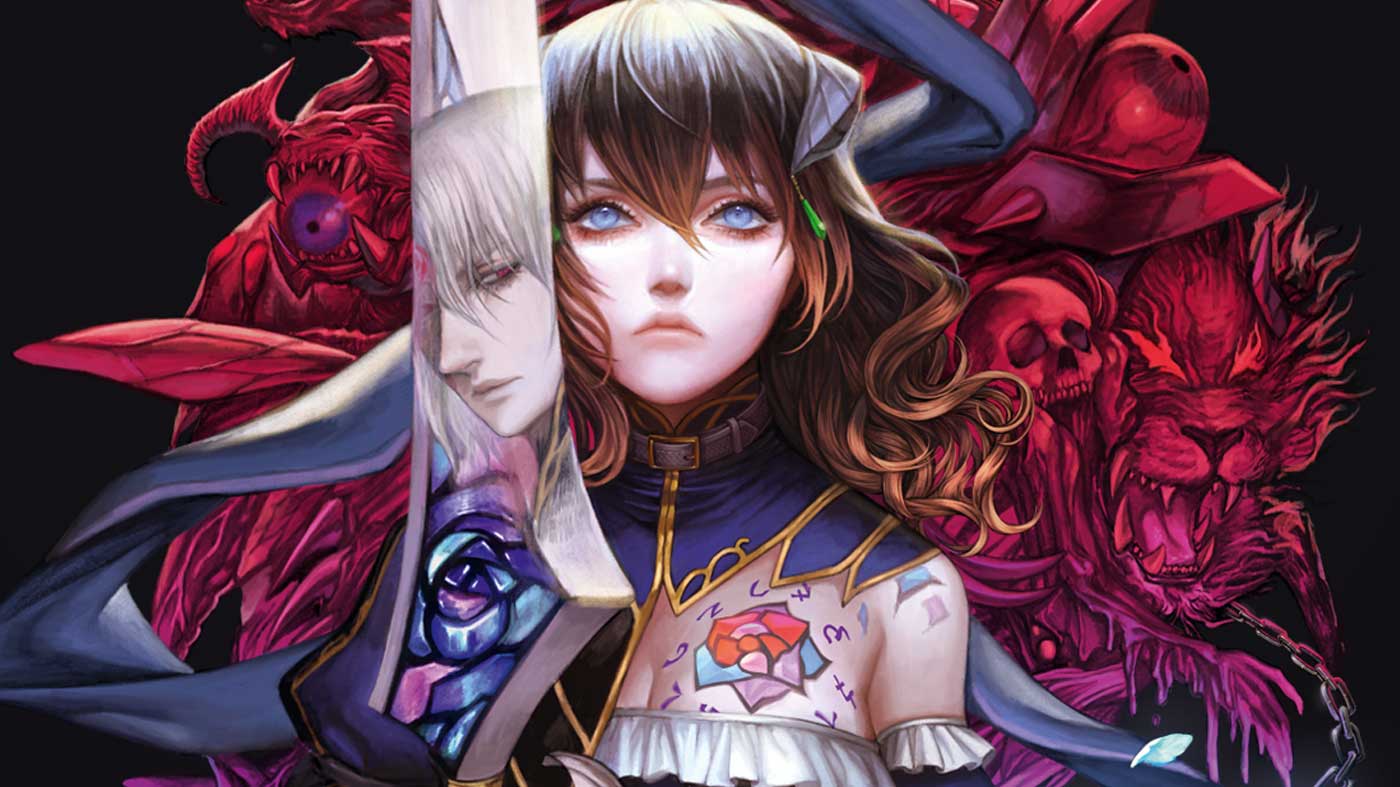
Kickstarter projects are rife with issues, but that’s not to say some haven’t been successful and even gone on to spawn franchises of their own. The trend of kickstarting is arguably on a decline after some high-profile failures, but one of the longest-running projects has finally seen its release after numerous delays and developer changes. You’d be forgiven for thinking that Bloodstained: Ritual of the Night was a mess, given how tumultuous its development has been, but thankfully, Bloodstained does a fantastic job of emulating the experiences it’s inspired by and is one of the best retro styled games released this year, if not this generation.
Bloodstained follows Miriam, an orphan who has been experimented on by the Alchemist guild allowing her to absorb crystallised energy (called shards) but in the process also slowly crystallising her whole body. The experimentation was rough, putting Miriam into a ten-year coma until she is awoken by Johannes who has slowed her condition. To both prevent demons from taking over the world and halt her own terminal condition, Miriam ventures into a demon castle possessed by Gebel, another experiment just like Miriam.
While I appreciate there was some effort made to give Bloodstained a story, its execution is jarring. The opening scenes are specifically needlessly verbose, and the dialogue between the characters feels slightly stilted and somehow always manages to pop up just as you’re finding your groove and exploring. It’s a minor gripe, admittedly, as the pacing of the game is otherwise fantastic, but it’s one of my pet hates when a story gets in the way of the game (especially when the said story isn’t particularly compelling to begin with).
Bloodstained is itself, as expected, a shameless clone of the old Castlevania games. Think Symphony of the Night, Dawn of Sorry and even Order of Ecclesia. You’ll take Miriam through this massive demonic landmark, exploring for enemies and abilities that’ll let you eventually venture in further until you meet the big bad himself. It’s a tried and true formula that many indie games, in particular, have been attempting to emulate in the last decade, but it’s what Bloodstained does right and how it understands the nuances of its genre that separates it from the rest.
I mentioned shameless previously, but it’s important to highlight I don’t mean that in a negative context. Konami has pretty much given up on making traditional Castlevania games (or any, really) and it only makes sense that Bloodstained, given its pedigree of developers, mimic the game it’s inspired by. This works to strengthen the game’s appeal, where it plays brilliantly and effortlessly for fans of the games that have come before it but does enough new to modernise itself for more modern fans who’ve never played a Castlevania game before.
What surprised me most about Bloodstained is just how much depth and detail is in its underlying systems. Almost every enemy in the game can randomly drop a shard, which gives Miriam an ability based on that enemy. There’s over a hundred of them and carrying more can improve Miriam’s skills too. Some are more passive – improving damage with certain weapons or spells, while others can be spells themselves. There’s a heap to drop, unlock and sort through and it’s fun to try so many of the abilities not only in combat but also in the environment to open more and more areas to explore.
On top of the shards, there’s also a full cooking and crafting system in play which lets Miriam create consumables and new equipment for herself using materials found in the world. Crafting making an appearance in every game usually has me rolling my eyes cynically, but Bloodstained doesn’t force you to craft but also doesn’t force you to micromanage every aspect of your inventory to be successful. It’s there if you want to excel but by no means a requirement. As an example – players who dabble in the cooking will no doubt enjoy the permanent stat boost every new recipe rewards, but a player can easily get through the game without ever having cooked if they don’t want to.
In terms of the combat itself, and how it flows, Bloodstained does a great job at emulating the combat of the classic Castlevania games. You’ve got a vast variety of primary weapons – including whips, guns and a plethora of blades as well as shards that usually function best as a distance covering weapon (though they suit many purposes). I appreciate that there’s a vast variety of combinations of weapons and shards for you to take into battle in Bloodstained, but the combat itself has a flow to it that’s a bit too familiar. Whether or not it was the intention of the developers to do so, it felt like a bit of a missed opportunity to develop the combat a bit more given how far we’ve come with action and adventure games today. What’s here is still fantastic, though, even if some shards are stupidly overpowered.
That isn’t necessarily a bad thing either, as Castlevania games have always been difficult but easy to break open if you use and abuse its mechanics properly. Bloodstained has a standard difficulty curve – you’ll struggle greatly at first, but eventually, you’ll find a winning combination of shards and weaponry that’ll let you breeze through things quickly. For those wanting to do so, you’ll take about ten to fifteen hours. Those wishing to get the most out of the game – especially beat some of the games more vicious optional boss battles – will easily take upwards of thirty to fifty hours to do absolutely everything.
One thing that Bloodstained gets right mainly is the presentation, which is stellar. While I’ve had to come to terms with the fact we’ll probably never get a game of this scale and depth with detailed sprite work, the alternative offered here is pretty fantastic nonetheless with a few exceptions. The game looks and sounds excellent for the most part – Miriam herself animates well and as such feels responsive to control. Accessories and hats even appear on Miriam, giving the game a greater sense of polish than others. Obviously, being inspired by Castlevania, Bloodstained is also going for a very gothic inspired look – and as such more of the locales you’ll trudge through all feel authentic and atmospheric.
Despite all this, though, there are a few things on a technical level about Bloodstained that stops it from being truly perfect. While it’s been fixed now, I did have to restart my game to overcome a progression bug implemented by one of the game’s updates – so be sure to update your game before starting! Other little visual niggles here and there slowed down the action reasonably often on the Playstation 4 Pro. The game would sometimes slow down or sometimes even come to a halt whenever a new shard was discovered, and the game drops frames every now and then when entering busy rooms. Sometimes, the game would even crash completely, which in a game with no autosave, was very frustrating.
These technical issues, while persistent, thankfully don’t do much to take away from the Bloodstained experience overall but it’d be remiss to pretend they didn’t exist at all.










